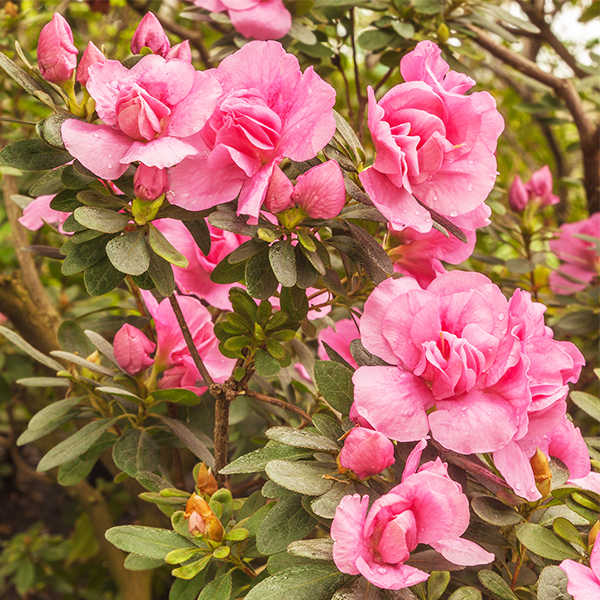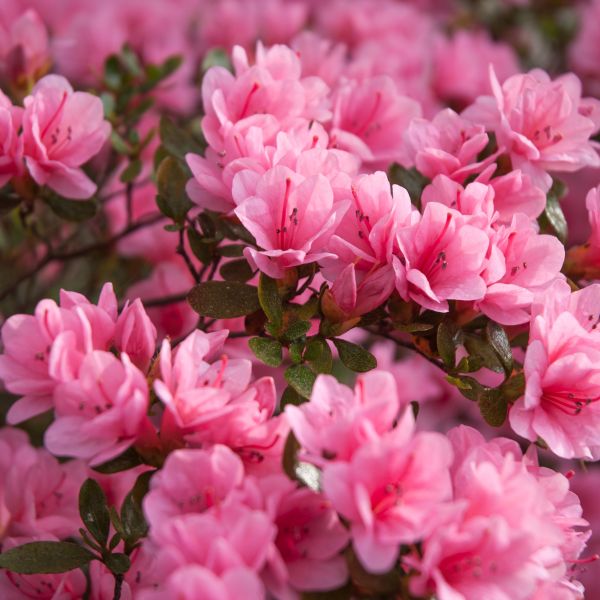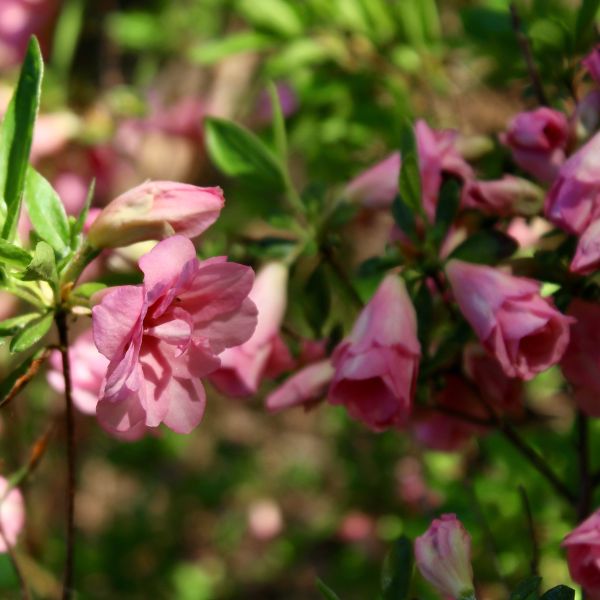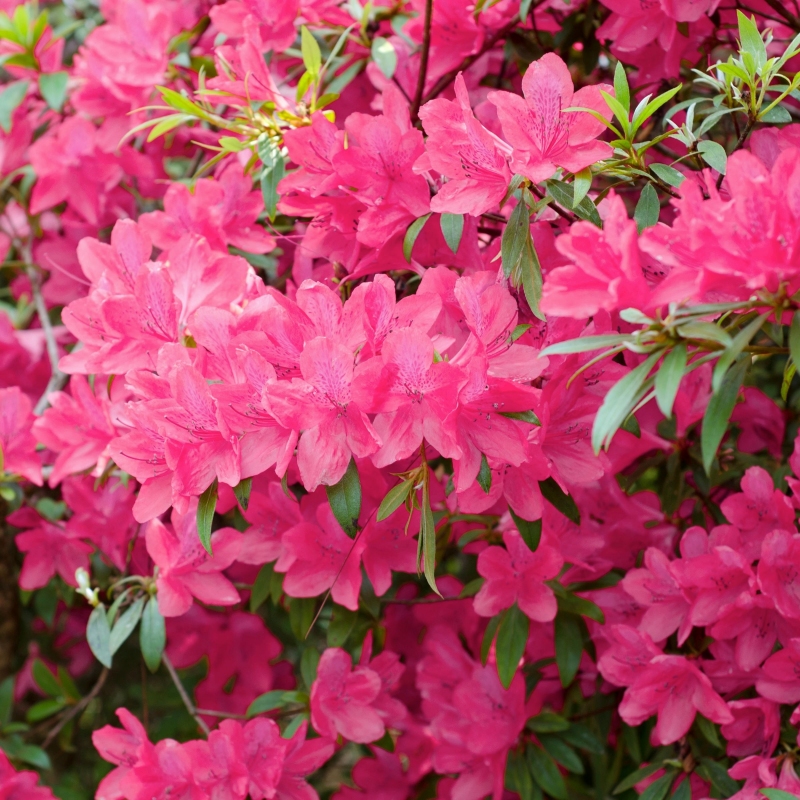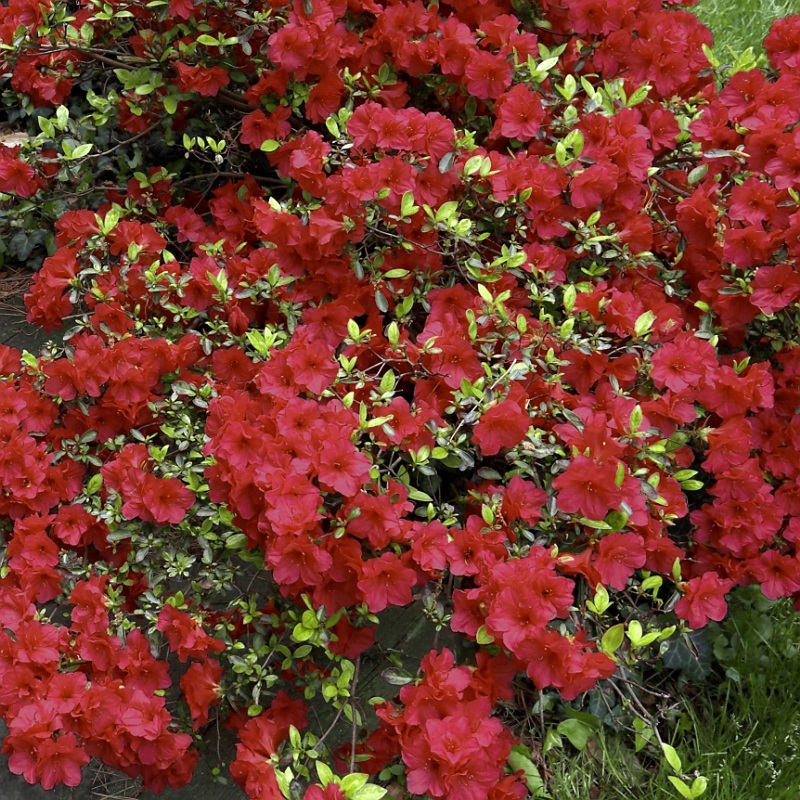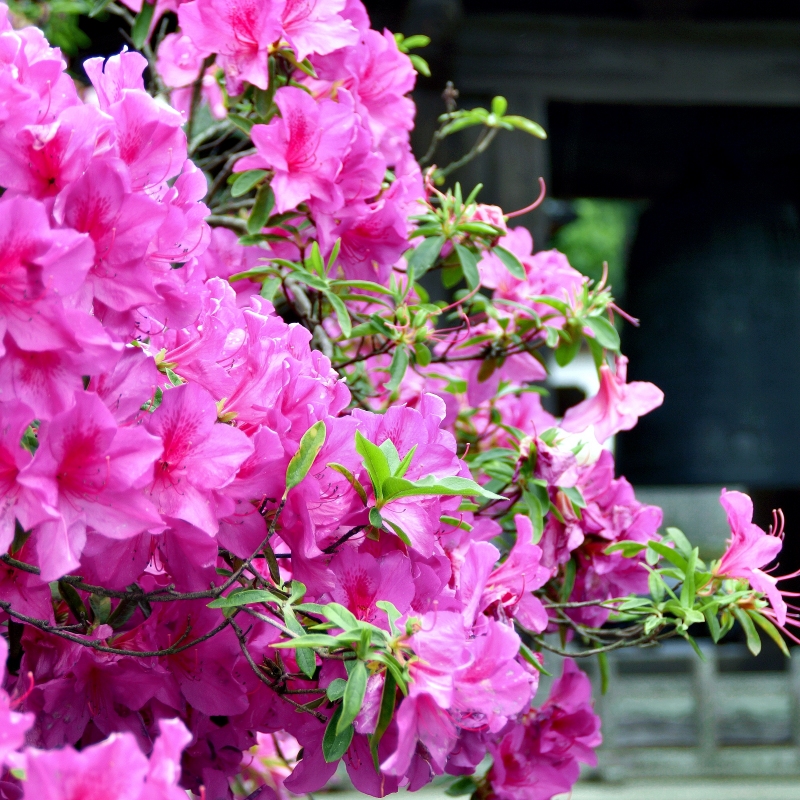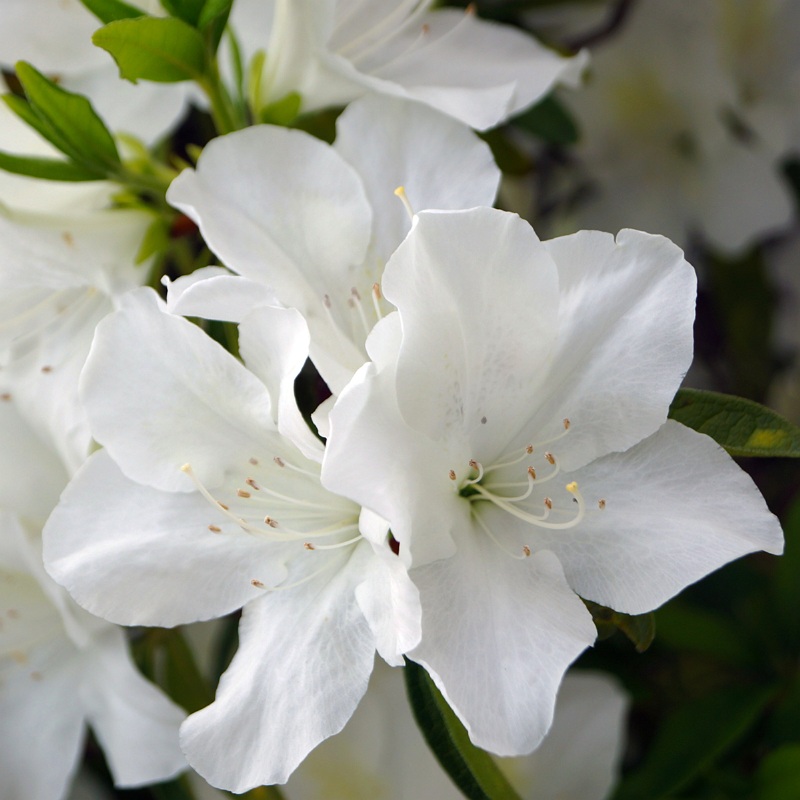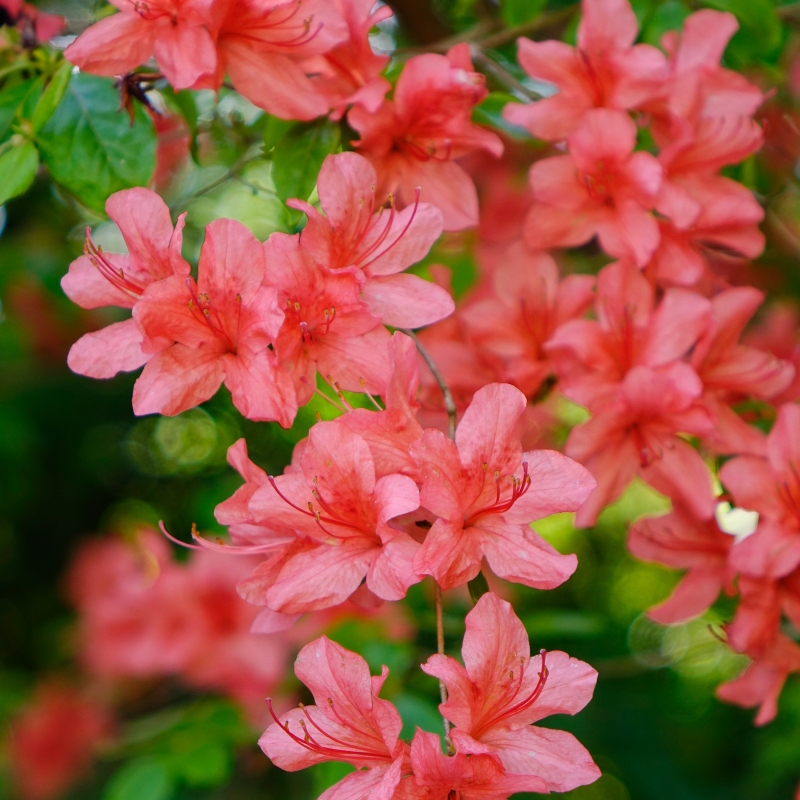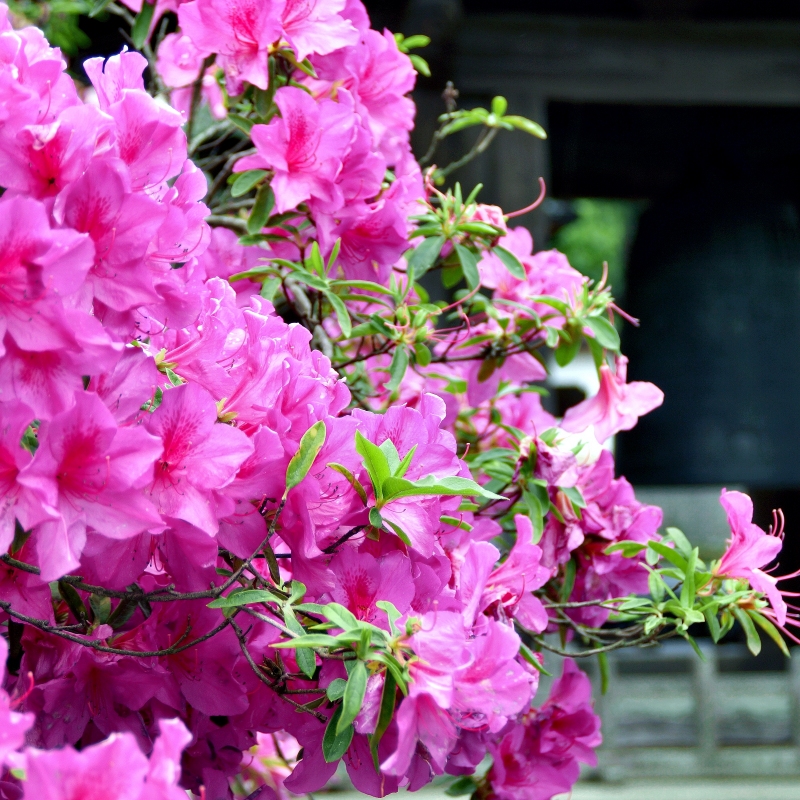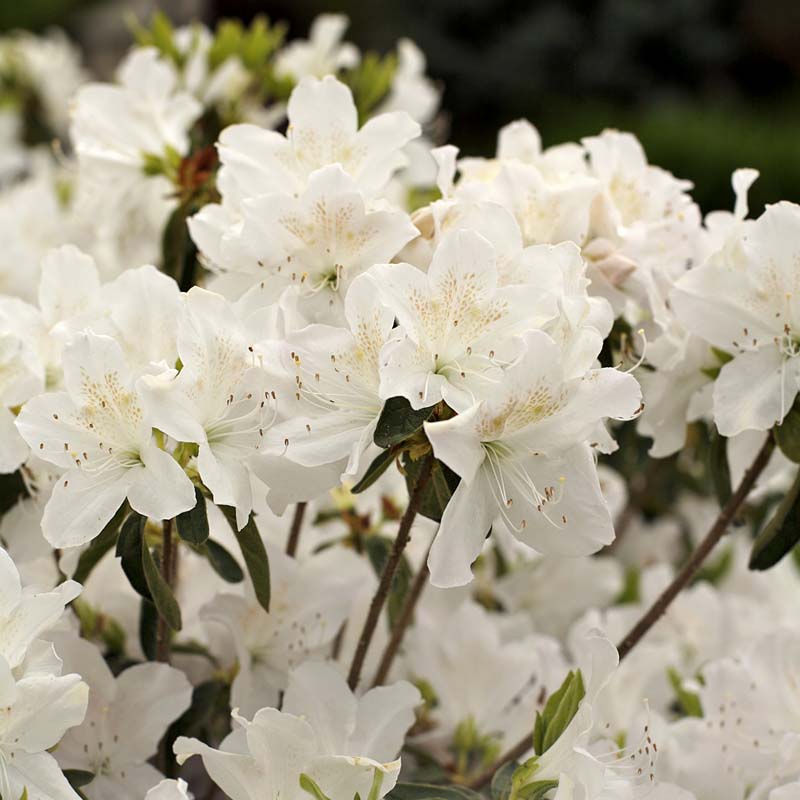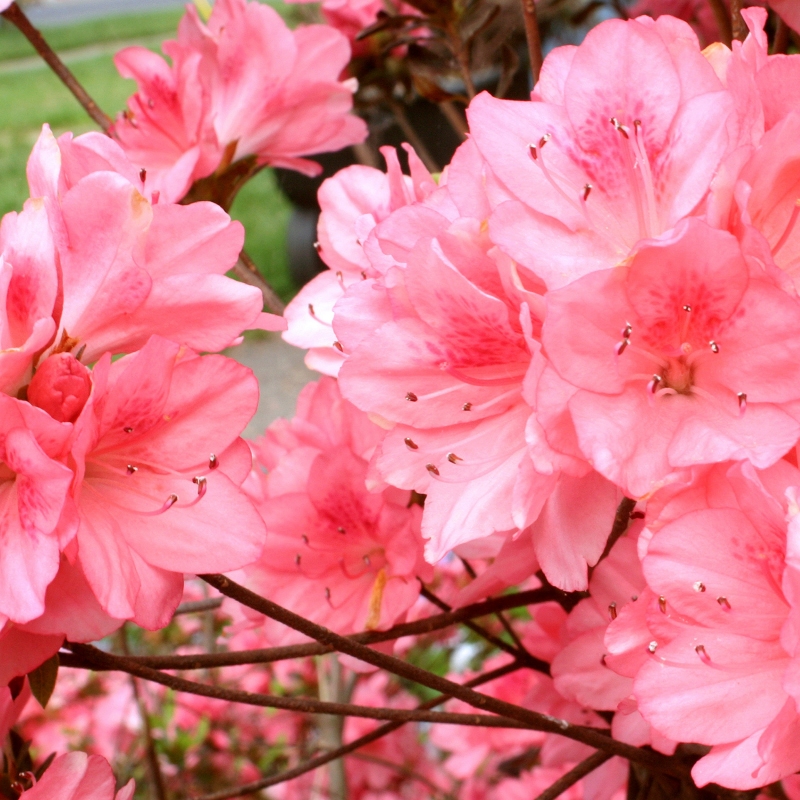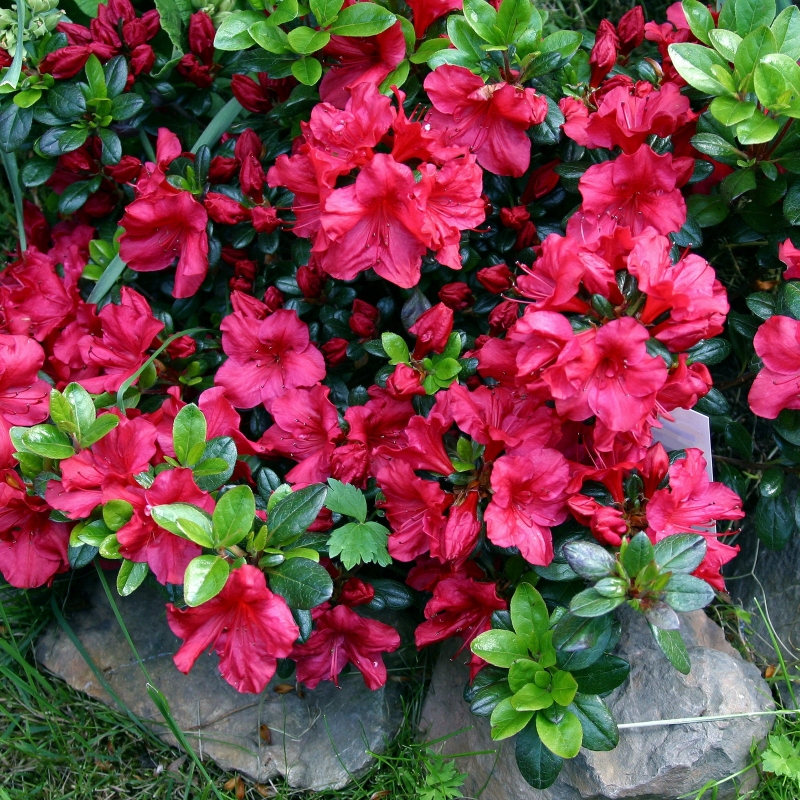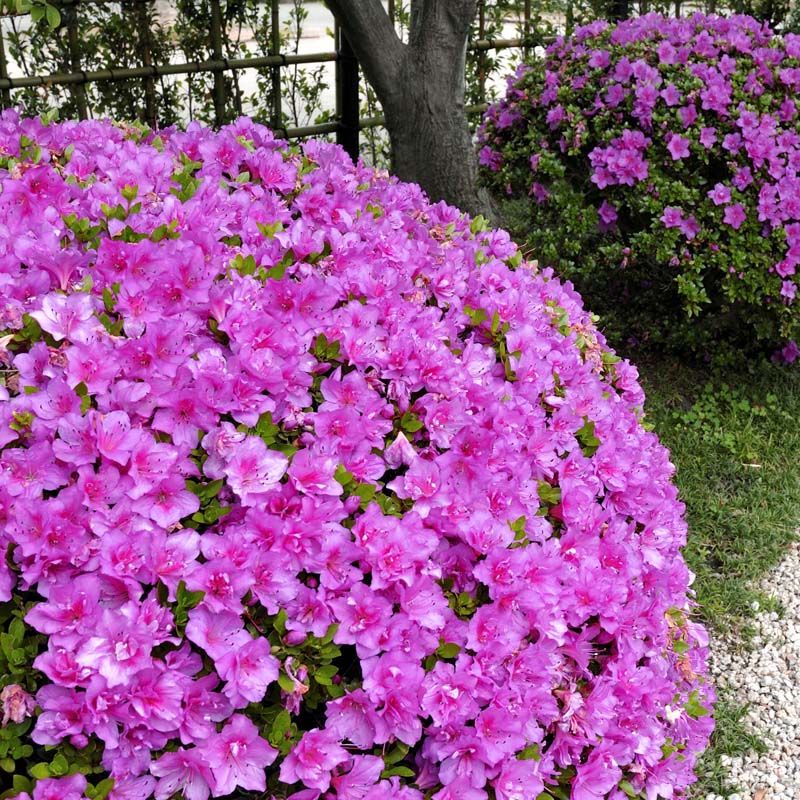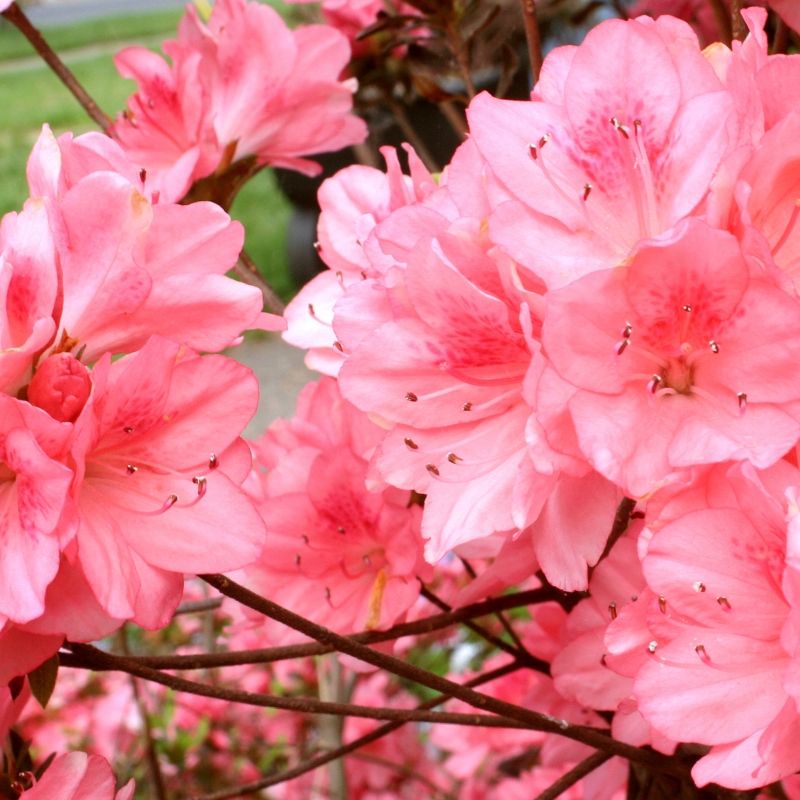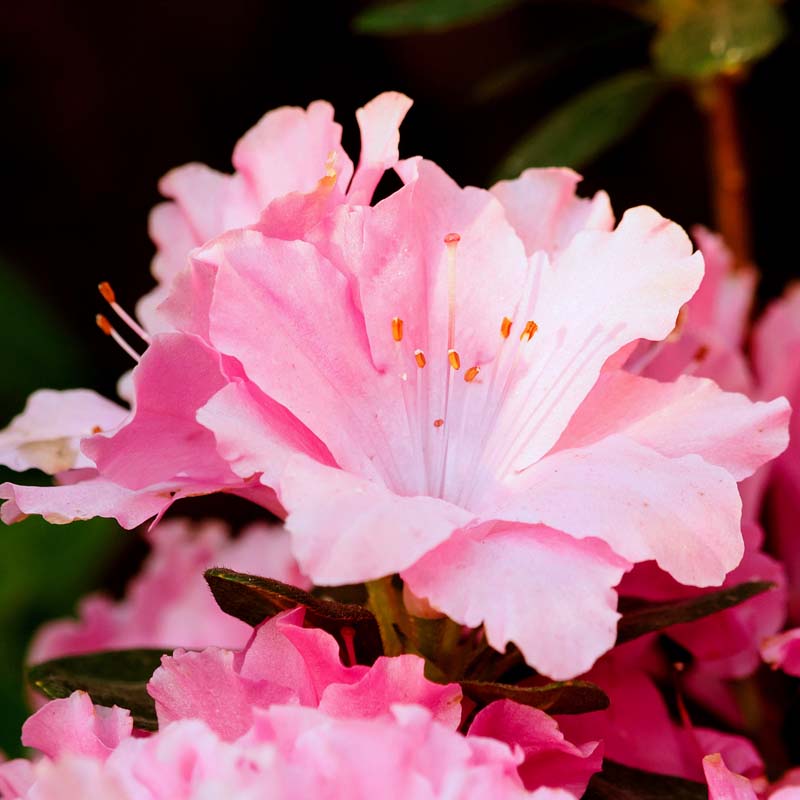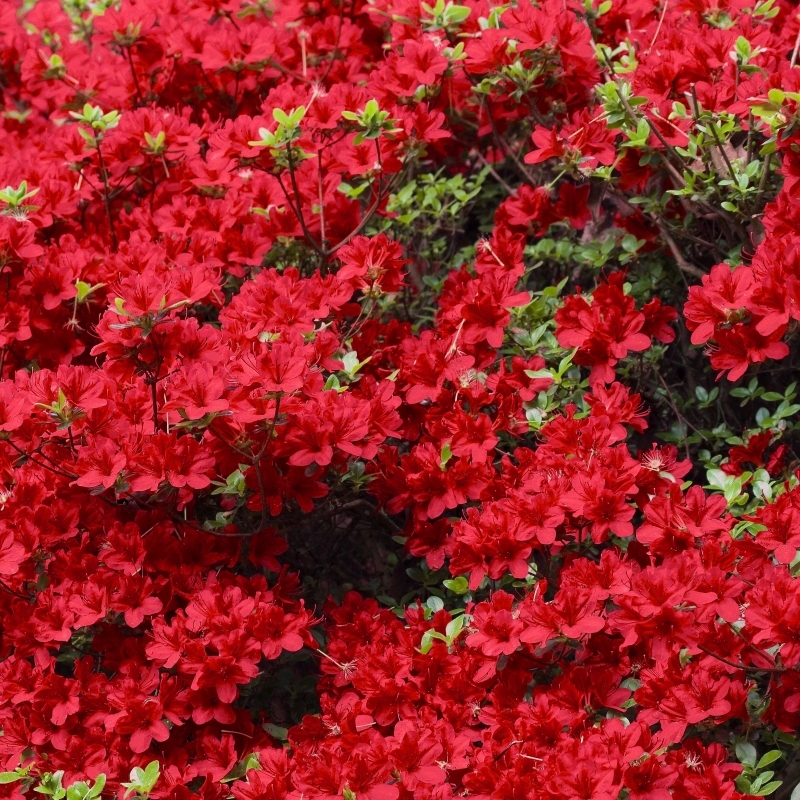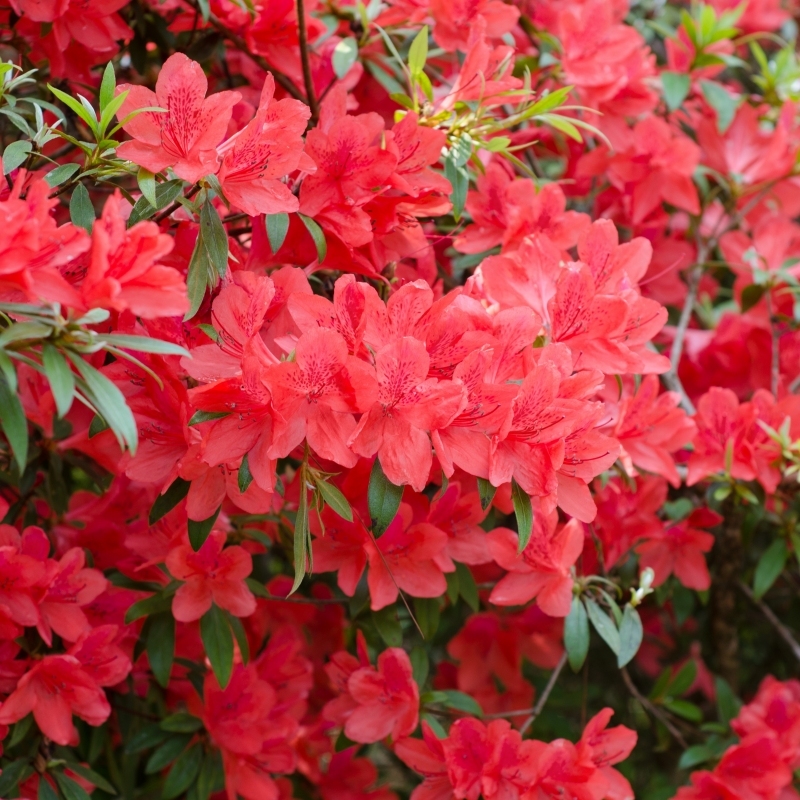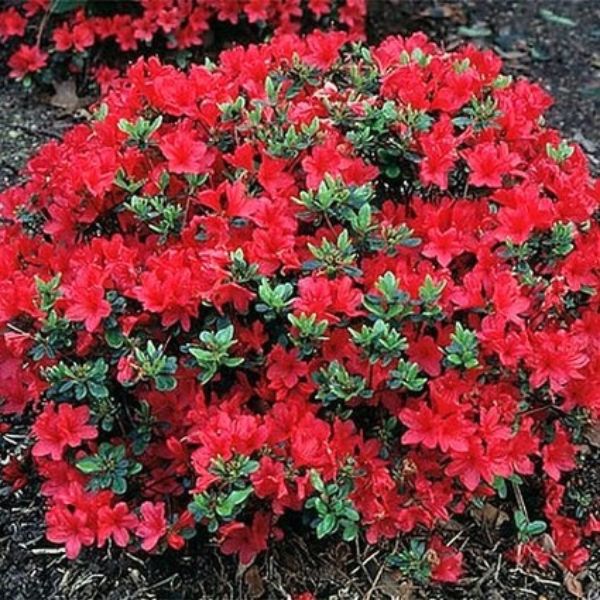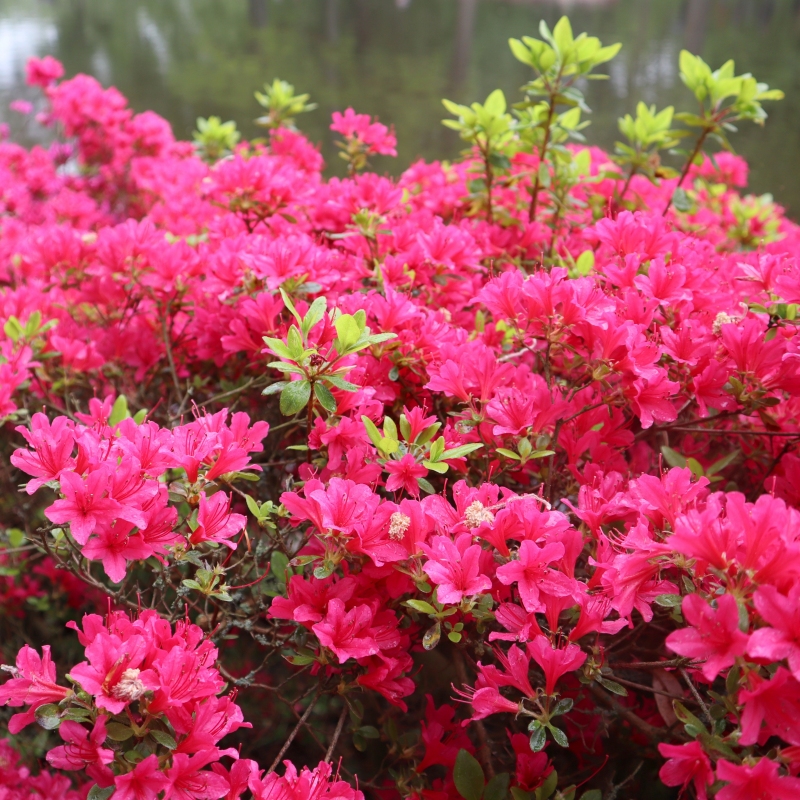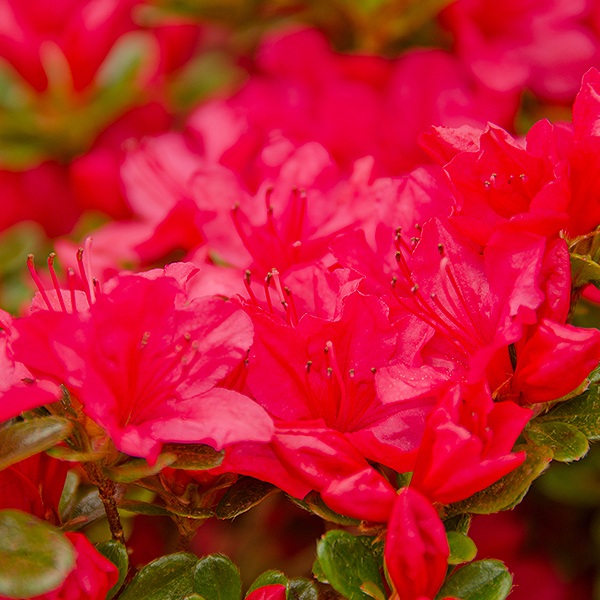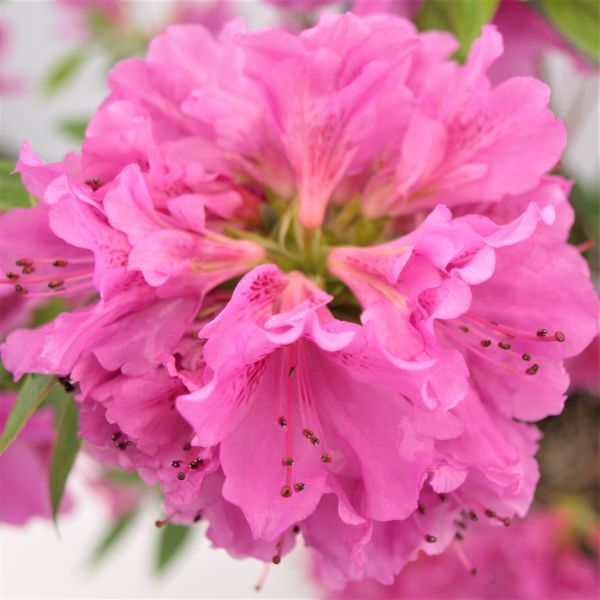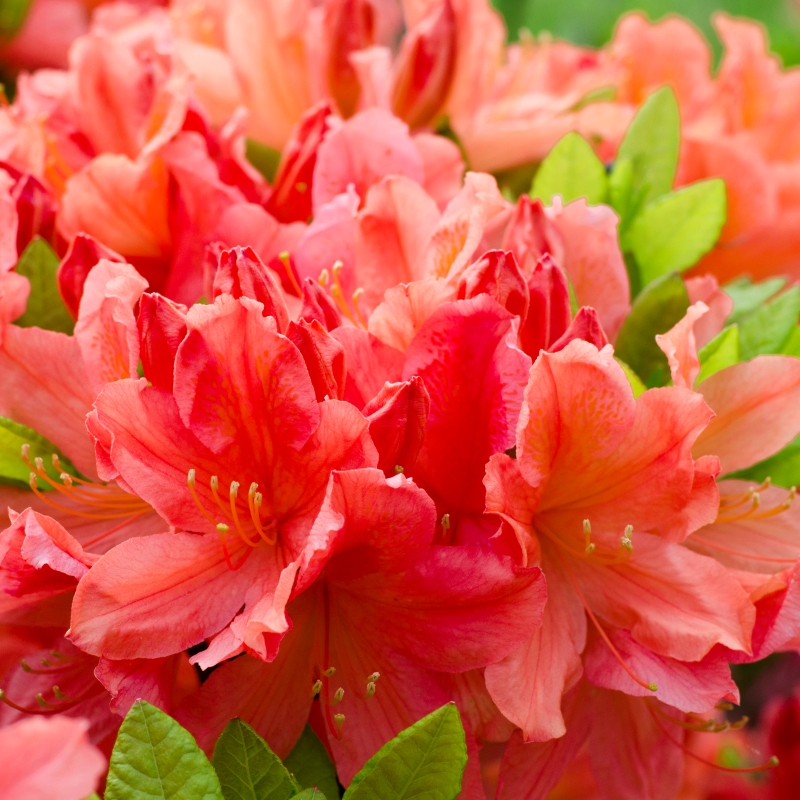

Rosebud Azalea
Rhododendron 'Rosebud'
19 reviews


Rosebud Azalea
Rhododendron 'Rosebud'
19 reviews
- Beautiful, vibrant blooms in a variety of colors
- Low maintenance and easy to care for
- Drought tolerant once established
- Ships to 43215 in 7-10 Days
- Free Shipping Over $150
- Plant Arrival Guarantee
- In Stock
- Free Plant Consult
$200
$45.00
$65.00
30% Off
- 1 Gallon
- Trade 3 Gallon
We are sorry, product is currently out of stock due to seasonal availability. Please check the "Related plants available in your area" section below
Why Rosebud Azalea?
Rosebud Azalea (Rhododendron 'Rosebud') is a compact shrub known for its unique flower shape. The blooms resemble rosebuds, hence the name. The flowers are double-flowered, meaning they have multiple rows of petals that create a stunning layered effect. This azalea variety is a popular choice for gardens as it adds a touch of elegance and charm with its beautiful and distinctive blossoms.
Related plants available in your area
Sunlight
Rosebud Azalea thrives in partial shade to full sun conditions. It requires at least 4-6 hours of direct sunlight each day to ensure optimal growth and abundant blooms.
Watering
Rosebud Azaleas require regular watering, especially during the summer months. They prefer consistently moist but well-draining soil. It is important to ensure the soil doesn't become waterlogged, as this can lead to root rot.
Fertilizing
Rosebud Azaleas require a balanced fertilizer with a ratio of 10-10-10 or 12-12-12. Fertilize every 6-8 weeks during the growing season, starting in early spring and ending in early fall. Be careful not to over-fertilize, as it can harm the plants.
Rosebud Azalea (Rhododendron 'Rosebud')
The Rosebud Azalea, scientifically known as Rhododendron 'Rosebud', is an exceptional flowering shrub that captivates with its enchanting beauty. This deciduous azalea variety is beloved for its stunning, fully-double, rose-shaped blooms that resemble delicate pink or white rosebuds, hence its name.
Rhododendron 'Rosebud' typically grows to a height of 4-6 feet, with a spread of 3-4 feet, making it an ideal choice for gardens of various sizes. Its compact and mounded growth habit adds an element of elegance to any landscape or garden bed. The deep green, glossy foliage serves as a perfect backdrop to showcase the abundant floral display during the blooming season.
One of the key attributes of the Rosebud Azalea is its amazing fragrance. The delightful rose-like scent exuded by the blossoms creates a pleasing atmosphere, enticing both humans and pollinators alike. This azalea variety blooms in the spring, typically from late April to early May, adding a vibrant splash of color and fragrance to your garden.
In terms of care, Rhododendron 'Rosebud' prefers a partially shaded location that receives morning sun and afternoon shade or filtered light. It thrives in well-draining, acidic soil that is rich in organic matter. Regular watering is crucial, especially during dry spells, to keep the soil evenly moist. Providing a layer of mulch around the plant will help maintain soil moisture and regulate temperature. Pruning should be done soon after flowering, if necessary, to maintain the desired shape and size.
The Rosebud Azalea is a versatile and eye-catching shrub that can be used as a solitary specimen, in group plantings, or even to create a beautiful floral hedge. Its exceptional beauty, combined with its intoxicating fragrance, make it an unforgettable addition to any garden or landscape.
Plant Information:
| Botanical Name: | Rhododendron 'Rosebud' |
| USDA Zones: | 6-9 |
| Water: | Moderate |
| Soil Needs: | Well Drained |
| Mature Height: | 2 - 3 feet |
| Mature Spread: | 3 - 4 feet |



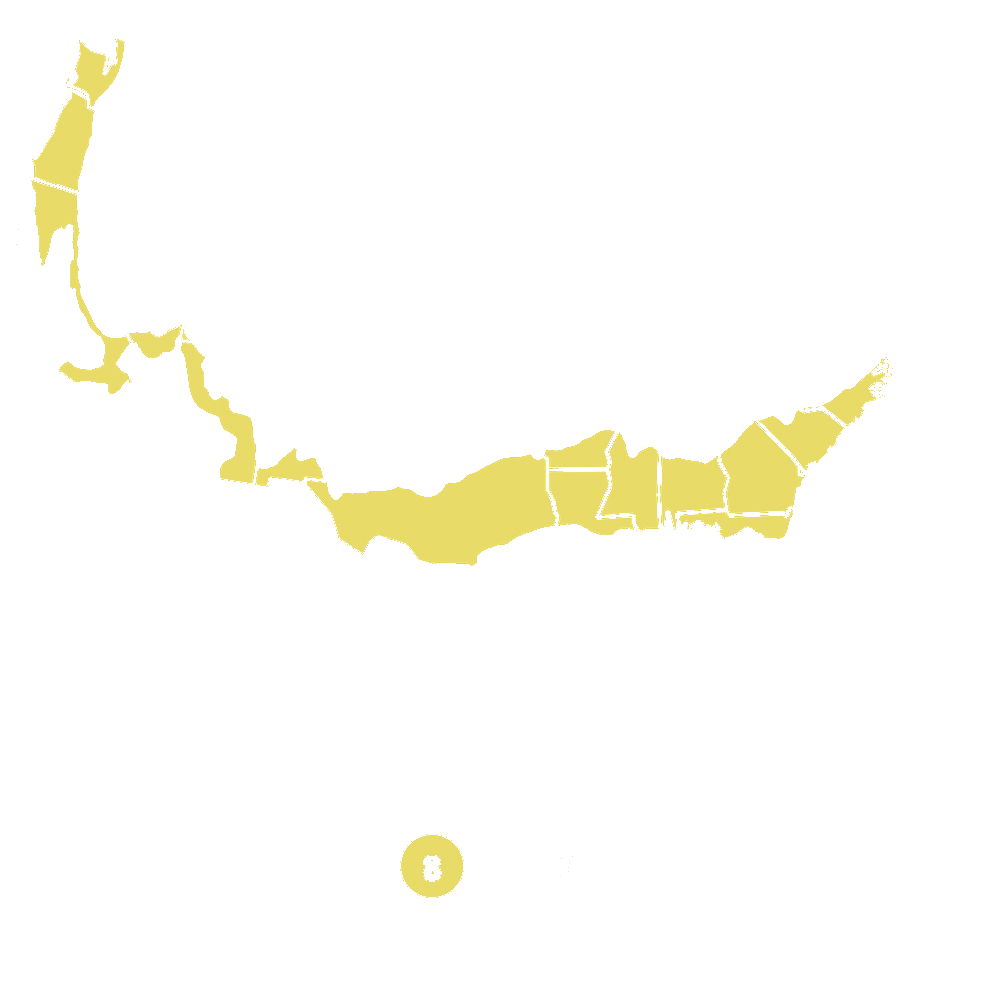

Pollination Info
Pollination Information for Rosebud Azalea (Rhododendron 'Rosebud')
Rosebud Azalea (Rhododendron 'Rosebud') is a popular flowering shrub known for its beautiful and unique rose-like blooms. Like all azaleas, it requires proper pollination to set fruit and produce seeds. Here are some important pollination facts for Rosebud Azalea:
1. Flower Structure
The flowers of Rosebud Azalea are funnel-shaped and have five petals arranged in a rosette-like formation. They come in various shades of pink, red, or white, adding a splash of color to any garden.
2. Attracting Pollinators
Rosebud Azalea flowers are rich in nectar which attracts a wide range of pollinators, including bees, butterflies, and hummingbirds. These insects are essential for transferring pollen between flowers and ensuring successful pollination.
3. Self-Fertilization
Rosebud Azalea has the ability to self-fertilize, which means that a single plant can produce seeds without the need for another azalea nearby. However, cross-pollination with another compatible azalea cultivar can lead to healthier offspring with greater genetic diversity.
4. Compatible Pollinators
While Rosebud Azalea can self-pollinate, having pollinators such as bees and butterflies visiting the flowers greatly enhances the chances of successful pollination and fruit set. Therefore, it is beneficial to maintain a diverse garden ecosystem to attract these pollinators.
5. Timing
Rosebud Azalea blooms in spring, typically from April to June, depending on the climate and local growing conditions. It's important to note that the flowers are receptive to pollination for a limited time, usually around a week, so it's crucial to ensure pollinators are present during this period.
6. Seed Production
After successful pollination, Rosebud Azalea will develop seed pods, containing numerous small seeds. These pods take time to mature and ripen. Once fully matured, the pods will split open, releasing the seeds into the environment.
7. Germination and Propagation
Collecting the seeds from mature Rosebud Azalea pods and sowing them in a suitable growing medium can be an effective way to propagate new plants. However, keep in mind that it may take a few years for the seedlings to reach maturity and start flowering.
Overall, Rosebud Azalea is a beautiful and versatile shrub that relies on insect pollinators for successful reproduction. By providing a suitable habitat for pollinators and understanding the plant's pollination needs, you can enjoy the vibrant and fragrant blooms of this azalea variety in your garden.
FAQ
Rosebud Azalea (Rhododendron 'Rosebud') FAQ
General Information
1. What is Rosebud Azalea?
Rosebud Azalea, scientifically known as Rhododendron 'Rosebud', is a compact, slow-growing evergreen shrub that belongs to the Rhododendron genus. It is a popular ornamental plant cherished for its stunning rosette-shaped flowers.
2. What does Rosebud Azalea look like?
Rosebud Azalea features dense, bright green foliage that remains attractive all year round. The flowers are the highlight of this plant, with each blossom resembling a small, rounded rosebud. They typically have a vibrant pink color with subtle tones of lavender.
3. How tall and wide does Rosebud Azalea grow?
Rosebud Azalea is a small-sized shrub that typically reaches a height of 1 to 2 feet (30 to 60 cm) and has a similar spread. Its compact nature makes it an excellent choice for garden borders, containers, or small spaces.
Planting and Care
1. Can Rosebud Azalea be grown in containers?
Yes, Rosebud Azalea can be grown in containers. Choose a pot with good drainage and a soil mix suitable for azaleas. Ensure the container is large enough to allow the plant's roots to spread comfortably.
2. Where should I plant Rosebud Azalea?
Rosebud Azalea thrives in partial shade to full sun conditions. Choose a location in your garden that offers dappled sunlight or afternoon shade. Ensure the soil is acidic, well-draining, and rich in organic matter.
3. How often should I water Rosebud Azalea?
Rosebud Azalea prefers evenly moist soil, so it is important to water it regularly, especially during dry spells. However, avoid overwatering as it can lead to root rot. Check the moisture level by sticking your finger into the soil, and water when the top inch feels dry.
4. Does Rosebud Azalea require any special care?
Rosebud Azalea is generally low-maintenance, but there are a few care tips to keep in mind:
- Apply a thick layer of mulch around the base of the plant to help retain soil moisture and regulate temperature.
- Prune sparingly and only after flowering to maintain its compact shape.
- Fertilize in early spring with an acid-loving plant fertilizer to promote healthy growth and vibrant flowers.
- Protect the plant from harsh winter winds by wrapping it with burlap or providing a windbreak.
Propagation
1. How can I propagate Rosebud Azalea?
Rosebud Azalea can be propagated through various methods, including:
- Softwood cuttings: Take stem cuttings in late spring or early summer and root them in a well-draining rooting medium.
- Air layering: Choose a healthy branch, make a shallow cut and apply rooting hormone, then wrap the wounded area with damp sphagnum moss. After roots develop, cut the rooted section and plant it.
- Grafting: Budding or grafting onto suitable rootstocks can also be done by experienced gardeners or horticulturists.
Pest and Disease Control
1. What are some common pests that affect Rosebud Azalea?
Common pests that may affect Rosebud Azalea include:
- Azalea lace bugs
- Spider mites
- Aphids
- Caterpillars
2. What diseases should I watch out for?
Be watchful for diseases such as powdery mildew, root rot, leaf spot, and azalea gall.
3. How can I control pests and diseases?
Here are some control measures to consider:
- Regularly inspect your plants and promptly remove any infested or diseased material.
- Use organic insecticides or insecticidal soaps to control pests.
- Ensure proper watering and adequate air circulation to minimize the risk of diseases.
- Apply fungicides or other appropriate treatments as recommended by a horticulturist or garden specialist.
Winter Protection
1. How can I protect Rosebud Azalea during winter?
Follow these steps to protect your Rosebud Azalea during the winter months:
- Mulch around the base of the plant with a layer of organic material to insulate the roots and conserve moisture.
- Provide a windbreak using burlap or other protective material around the shrub.
- Water adequately before the ground freezes to prevent dehydration.
- In colder regions, consider covering the shrub with burlap or a frost blanket during severe cold snaps.
Always consult with local gardening experts or extensions for region-specific advice on winter protection.
Planting & Care
Planting & Care for Rosebud Azalea (Rhododendron 'Rosebud')
Planting:
- Choose a location with well-draining soil that receives partial shade. Avoid areas with heavy clay or soggy soil.
- Prepare the planting site by loosening the soil and removing any weeds or grass. Dig a hole that is twice as wide and as deep as the root ball.
- Mix in organic matter such as compost or peat moss into the soil at the bottom of the hole.
- Gently remove the Rosebud Azalea from its container and place it in the hole, making sure the top of the root ball is level with the soil surface. Backfill the hole with the amended soil, firming it gently around the roots.
- Water the newly planted azalea thoroughly, and apply a layer of mulch around the base to help retain moisture.
Care:
- Watering: Keep the soil moist but not waterlogged. Azaleas prefer consistently moist soil, especially during hot, dry periods. Water deeply when necessary, avoiding overhead watering which can promote disease.
- Fertilization: Feed the Rosebud Azalea in early spring and late summer with a slow-release, acid-forming fertilizer specifically formulated for azaleas. Follow the product instructions for the correct amount to use.
- Pruning: Prune the azalea immediately after flowering to maintain its shape and promote bushiness. Remove any dead, damaged, or crossing branches. Avoid heavy pruning, as it may reduce next year's blooms.
- Protection from Winter Cold: Mulch around the base of the plant with a layer of pine straw or wood chips to protect the roots from freezing temperatures. Avoid piling the mulch directly against the trunk.
- Pest and Disease Control: Monitor the Rosebud Azalea for common pests like lacebugs or spider mites. Treat infestations promptly using appropriate insecticidal soaps or horticultural oils. Keep an eye out for diseases like powdery mildew or leaf spot and take necessary measures to control them.
By following these planting and care guidelines, you can enjoy the beautiful blooms of the Rosebud Azalea for years to come.
Check Out These Verified Customer Reviews:
Customer Reviews
4.7 out of 5 based on 19 reviews
Thank you! Your review has been submitted.
I'm extremely happy with my purchase of the Rosebud Azalea. It's thriving and vibrant.
The shipment was prompt and the plant was well protected. Excellent overall experience.
Customer service was fantastic. They promptly answered all my questions and were very helpful.
Item has been added to your cart.



